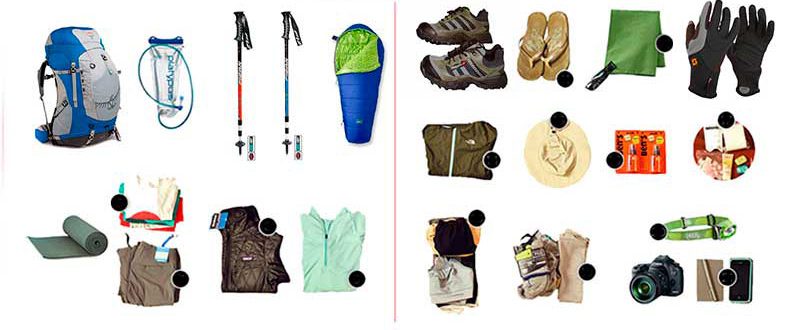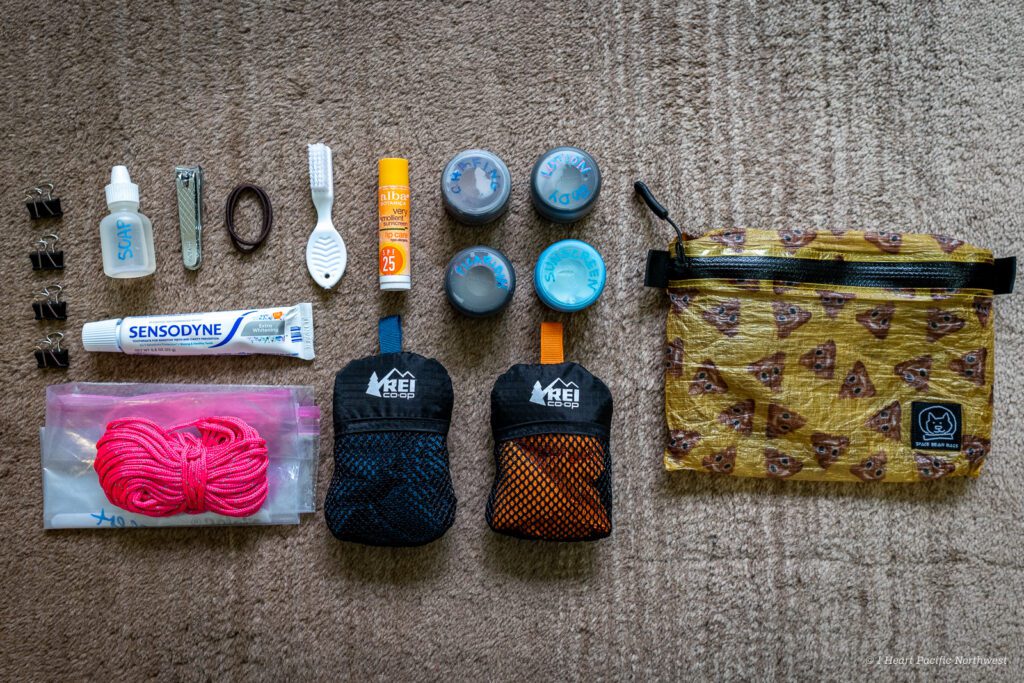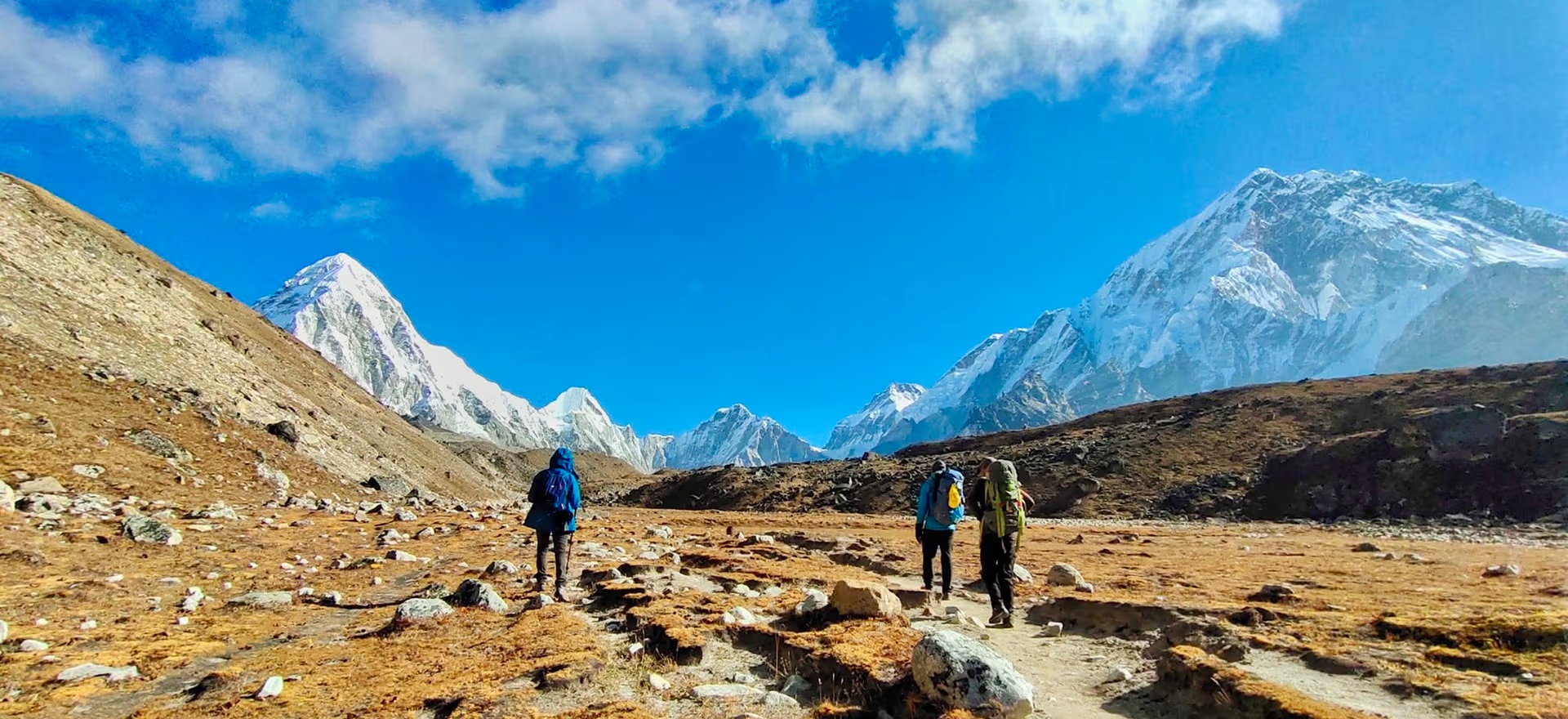Have you finally decided to take your step into the Himalayas of Nepal? Well, a trek in the Himalayas is an incredible adventure, but it requires careful planning, especially when it comes to what you pack. The right gear can make all the difference between a challenging journey and an unforgettable experience.
But don’t get nervous. We’re here to help get all the necessary things ready for your next trek. In this guide, we’ll break down a complete gear checklist for your Autumn Nepal Trek , helping you pack smart and stay comfortable.
Remember, a trusted partner like Glacier Safari Trek can also provide expert advice on packing and even help with gear rental, ensuring you’re fully prepared. So, let’s get ready to pack!
Essential Trekking Gear for Nepal
Having the right basic gear is your first step towards a successful and enjoyable trek. With the right trekking gear, you can stay warm in the cold, climb those stiff hills, and more. Additionally, if you are just beginning your trek journey, it is also recommended to begin with a beginner friendly peak. However, coming back to the topic, here are the essential trekking gears for Nepal:

Backpack and Daypack
1. Main Backpack (for self-carry) or Duffel Bag (for porter):
- If you’re carrying all your own gear, a comfortable backpack (around 40-60 liters) is ideal. Make sure it fits well and has good support.
- If you’re hiring a porter, they will carry your main luggage in a duffel bag (60-90 liters). Choose one that’s tough and waterproof, as it will keep your things safe even in case of a fall.
2. Daypack (15-30 liters):
This is the smaller bag you’ll carry daily. It holds your water, snacks, camera, rain gear, and anything you need quick access to during the day. It will basically be your partner that holds everything you need during the trek.
3. Rain Covers & Dry Bags:
Always pack rain covers for both your main bag and daypack. It’s also smart to use dry bags or even thick garbage bags inside your pack to keep important items like clothes and electronics completely dry, just in case.
Clothing Layers
The secret to staying comfortable in Nepal’s changing mountain weather is cloth layering. You’ll need clothes you can easily add or remove. This will help you maintain a proper body temperature throughout the trel.
- Base Layers (2-3 sets): These are worn next to your skin. Choose materials like merino wool or synthetic fabrics that dry quickly and move sweat away from your body. Pack both short-sleeve and long-sleeve tops, and a pair of long bottoms.
- Mid Layers (1-2): A fleece jacket or pullover is perfect for adding warmth. They are light and breathable.
- Outer Layers (1): You’ll need a waterproof and windproof jacket and trousers. These are your shield against rain, snow, and strong winds, especially at higher altitudes. Look for materials like Gore-Tex.
- Insulated Jacket (1): A warm puffy jacket (filled with down or synthetic material) is a must for cold evenings and high-altitude sections of your trek.
Footwear
Your feet are your most important tool on a trek, so you must treat them well! So, make sure you have the following things for your next trek in Nepal:
- Trekking Boots: Invest in a good pair of hiking boots that offer ankle support, are waterproof, and have a good grip. It’s super important to break them in before your trip to avoid any discomfort.
- Socks: Don’t underestimate the power of good socks! Pack 3-4 pairs of thick wool hiking socks (merino wool is best as it resists odors and wicks moisture). Also, bring 2-3 pairs of thin liner socks to wear underneath, which can help prevent blisters.
- Camp Shoes/Sandals: A lightweight pair of sandals or comfortable shoes for wearing around the teahouse in the evenings will give your feet a much-needed break from your boots.
Headgear and Accessories
Protect your head and hands from the sun, wind, and cold. It plays a much more important role than many think of. Therefore, have at least these accessories in your Autumn Nepal trek:
- Warm Woolen Hat/Beanie: Essential for chilly mornings, evenings, and high altitudes. Make sure it covers your ears, as it will keep you safe from the cold and headaches.
- Sun Hat: A wide-brimmed hat or a baseball cap will protect your face from the strong Himalayan sun and make it comfortable for you to trek.
- Buff/Neck Gaiter: This versatile item can be used as a neck warmer, headband, face mask against dust, or even a light hat.
- Gloves: Bring two pairs for every trek if possible. Make sure one is thin liner gloves for mild cold and a warmer, insulated pair, and another is a waterproof pair for higher elevations.
Sleeping and Shelter Essentials
Sleeping is an important part of the trek, so having proper gear that helps you get a comfortable sleep is crucial. Here is a checklist of gear you must have for your Autumn Nepal Trek:

Sleeping Bag
While teahouses provide blankets, a good sleeping bag is your best friend for a warm night’s sleep.
- Temperature Rating: For most Autumn Nepal trek, a sleeping bag rated for -10°C to -15°C (14°F to 5°F) is recommended. If you’re trekking in winter or to very high altitudes, consider one rated for -20°C (-4°F).
- Sleeping Bag Liner: A silk or fleece liner adds extra warmth and keeps your sleeping bag cleaner.
Trekking Poles
Many trekkers find these incredibly helpful. It basically acts as a supporter and a partner for your tough trekking trails.
- Benefits: Trekking poles help reduce strain on your knees, improve your balance on uneven trails, and provide extra support on ascents and descents. They are highly recommended.
Headlamp and Extra Batteries
Power outages are common in remote areas. So, carrying a headlamp and extra batteries can be your lifesaver.
- Hands-Free Lighting: A headlamp is much more practical than a flashlight, leaving your hands free for other tasks. Always carry spare batteries.
Toiletries and Personal Hygiene

Staying clean and fresh, even in the mountains, contributes to your overall well-being. Here is a checklist of things you must have:
Toiletry Kit
Keep it small and simple.
- Essentials: Toothbrush, toothpaste, a small quick-drying towel, biodegradable soap, and hand sanitizer are key.
- Wet Wipes: Biodegradable wet wipes can be a lifesaver for quick clean-ups when water is scarce.
Extra Essentials
- Toilet Paper: Always carry your own supply, as it’s often not provided in teahouse toilets.
- Lip Balm with SPF: The sun and dry air can quickly chap your lips.
- Moisturizer: To combat dry skin from the mountain air.
Health and Safety Gear
Being prepared for minor issues can prevent them from becoming major problems.
First Aid Kit
A basic kit is essential for cuts, scrapes, and common ailments.
- Contents: Bandages, antiseptic wipes, pain relievers, blister treatment (like moleskin), and any personal prescription medications you need.
- Altitude Sickness Medication: If your doctor recommends it, carry medication like Diamox and know how to use it.
Water Purification
Never drink untreated water from local sources.
- Options: Water purification tablets, a portable filter (like Sawyer or Lifestraw), or a SteriPen are all good choices to ensure your drinking water is safe.
Sun and Skin Protection
The sun’s rays are much stronger at high altitudes.
- Sunscreen: Use a high SPF sunscreen (30+ or 50+) and apply it regularly, even on cloudy days.
- Sunglasses: High-quality sunglasses with UV protection are crucial to protect your eyes from intense sunlight and glare, especially from snow.
Documentation
These are the most important items you’ll carry. They will act as your pass throughout the trek, so keep them safe and waterproof.
- Passport & Visa: Make sure your passport is valid for at least six months beyond your trip, and have your Nepal visa sorted. Carry photocopies or digital copies separately.
- Trekking Permits: You’ll need permits like the TIMS (Trekkers’ Information Management System) card and any National Park entry permits. Your trekking agency will usually help with these.
- Travel Insurance Details: Ensure your policy covers high-altitude trekking and emergency evacuation. Keep a copy of your policy details.
- Cash: ATMs are rare on trekking routes. Carry enough Nepali Rupee (NPR) cash for meals, snacks, drinks, and tips.
Optional But Useful Items
Here is a list of things that are not compulsory but are always a good thing to have that can enhance your trek experience.
- Camera & Extra Batteries/Memory Cards: To capture the stunning Himalayan scenery.
- Power Bank: To charge your phone and other small electronics, as charging points can be limited or costly.
- Book/E-reader, Journal & Pen, Playing Cards: For downtime in teahouses.
- Small Padlock: For securing your duffel bag or room at teahouses.
- Snacks: While teahouses offer food, having your favorite energy bars or treats can be a nice boost.
Packing Tips for Autumn Nepal Trek
Here are a few final pieces of advice to make your packing process smoother.
- Pack Light, Pack Smart: Every extra pound feels heavier on the trail. Only bring what you truly need.
- Test Your Gear: Wear your boots and break them in. Test your layers to see how they work together.
- Consider Renting Gear in Kathmandu: If you don’t trek often, you can rent quality down jackets, sleeping bags, and trekking poles in Kathmandu at a reasonable price.
- Respect the Environment: Pack out everything you pack in. Use biodegradable products where possible.
Conclusion
Preparing for a Autumn Nepal trek might seem like a lot, but with this complete gear checklist, you’re well on your way to a comfortable and safe adventure. Whether it be the Everest Base Camp Trek or to Annapurna Circuit Trek, with these gears in hand, you can complete the trek.
From the right layers to essential safety items and important documents, being well-prepared allows you to immerse yourself in the incredible beauty of the Himalayas fully.
Furthermore, if you are having a hard time and are confused about the trekking routes and systems, feel free to reach out to us. We, the “Glacier Safari Trek” family, are more than happy to help you complete a safe and memorable trek throughout the different regions of Nepal. So, don’t hesitate and let’s make your next trek a fun and memorable one.

